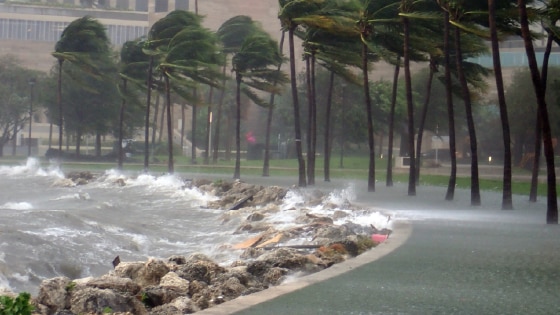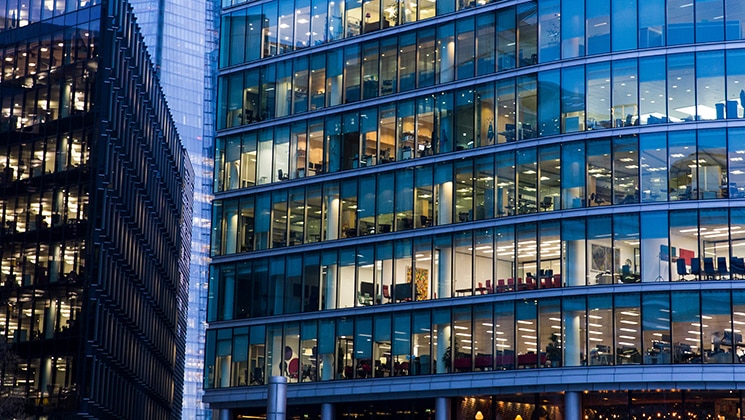
Risk managers and business leaders tend to be familiar with the threat of natural catastrophes in their geographical regions, but one is often overlooked: hail. Even companies based in the midwestern “Hail Belt” often underestimate the risks of hailstorms, sometimes failing to factor them in among other major business risks.
Given the right conditions, major hailstorms can happen anywhere in the country — at any time.
Given the right conditions, major hailstorms can happen anywhere in the country — at any time. And hail doesn’t like to act alone. Hail often comes as part of a stronger storm system with possible thunderstorms, lightning, and strong winds or tornados that could also bring costly damages to facilities and business operations.
These types of losses are largely preventable, but companies must first understand the risks — and then take steps to mitigate them.
Hail: a growing problem
In 2020, more than 4,500 large hailstorms ravaged the U.S. These events can bring hailstones as large as 6 inches in diameter that can fall at speeds of up to 100 miles per hour, causing massive destruction to cities across America.

As an example, in May 2017, the western part of Denver, Colorado, experienced the most catastrophic storm in the state’s history when hailstones the size of baseballs battered the city. The storm generated more than $2 billion in damage to homes, vehicles, and businesses, including the closure of a major shopping mall for several months.
While hailstorms cannot be prevented, the good news is that there are steps businesses can take to help protect their facilities from major losses. To start, commercial property owners should understand hail risks and identify their vulnerabilities.
Understanding hail risks
As the first point of contact for storms, roofs are particularly susceptible to hail damage. Light metal roofs and smooth roof coverings, including the single-ply PVC used on many commercial business roofs, can be dented or penetrated by large hail. Roofs with existing blisters are particularly vulnerable, as they can be easily ruptured by hailstones, leaving behind holes and leaks. And ballasted roofs with unanchored gravel can also be a serious hazard, as high winds could move the loose gravel, causing uneven patches on the roof or possible damage to neighboring properties as the gravel is blown around.
Rooftop equipment like heating and air conditioning systems are especially vulnerable and expensive to replace.
Unfortunately, damage from hail doesn’t end with roofs. In many instances, hailstones cause damage to more than just roofs – rooftop equipment like heating and air-conditioning systems are especially vulnerable.
And the damage isn’t inexpensive to fix. Condenser coils in air conditioning (AC) systems are fragile and units don’t necessarily come with built-in protection. The average cost to fix a condenser coil is $500, but replacing a coil can run at least $500 per ton of cooling, which can quickly add up in a large building. Replacing an entire AC unit could cost even more — in a 250,000-square-foot property, the replacement could easily reach $1 million.
Hailstorms can also bring leaks and water damage to walls, foundations, and electrical wiring, further disrupting business processes. Along with air conditioning units, roof-mounted equipment such as vents, cooling towers, solar panels, and skylights can also be damaged or destroyed.
Taking preventive action through partnership
Fortunately, there are preventive steps every business can take to protect its facility from hail damage. These can be as simple as conducting regular roof inspections and using hail guards or as thorough as installing impact-resistant roof coverings. Hail guards can mitigate most damage to HVAC units and are relatively inexpensive. For as little as $200 per unit, a business can save thousands of dollars in losses.
Partnering with an insurance provider with experience can provide additional expertise — and protection. Here are four ways Liberty Mutual helps its property customers mitigate the risk of hail.
- Developing property-specific loss estimates. Loss control engineers inspect locations to develop loss estimates, looking at details like the type of roof, its age and condition, and whether rooftop equipment is exposed or if there are adequate safeguards in place.
- Using modeling tools to identify areas most at risk. Liberty Mutual uses customer-specific details, hail data it has collected for more than 15 years, and its proprietary hail model to get a more detailed view of a business’s total hail exposure and where there is the most risk.
- Tailoring insurance programs to match exposure levels. Underwriters review property details and Liberty Mutual’s own data to tailor insurance programs to fit each customer’s situation. Two customers may be in the same area, but if one’s building has a hail-resistant roof and protected skylights and HVAC equipment and the other’s has unprotected skylights and rooftop equipment, they are going to have different levels of exposure — and two different insurance programs.
- Making recommendations to mitigate loss. Liberty Mutual’s property loss engineers can also make recommendations to help customers mitigate loss. An engineer might recommend installing hail guards, shields to protect AC coils, and protective screens on skylights. For companies that are building new facilities or re-roofing, installing impact-resistant roof coverings may also be considered. These recommendations are not just about protecting a building’s roof and rooftop equipment. Roof damage can lead to extensive water damage inside a building and, in some cases, disrupt service, both of which can be costly for a business.
The increasing frequency of hailstorms means that commercial property owners need to be aware of the potential risks to their buildings and operations. Assessing for facility vulnerabilities, making preventive investments, and partnering with insurance providers can help ensure that businesses are here to stay — not gone tomorrow.
Having a business continuity plan can help your business recover after severe weather or other disasters. Learn more in our article.
Related insights
This website is general in nature, and is provided as a courtesy to you. Information is accurate to the best of Liberty Mutual’s knowledge, but companies and individuals should not rely on it to prevent and mitigate all risks as an explanation of coverage or benefits under an insurance policy. Consult your professional advisor regarding your particular facts and circumstance. By citing external authorities or linking to other websites, Liberty Mutual is not endorsing them.



